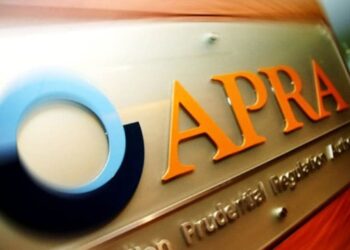Thousands of superannuation fund members who reacted to the early market volatility generated by the COVID-19 pandemic by switching their superannuation investment options simply crystallised their losses.
Superannuation funds have revealed to Federal Parliament that in the space of less than a month they lost billions of dollars in value, a good deal of which has since been regained.
An examination of evidence produced for the House of Representatives Standing Committee on Economics showed that the critical period during which superannuation fund members were most exposed to crystallising their losses was between the last week of February and the third week of March.
It shows that superannuation funds lost as much as 20% of their value in that one-month period, with thousands of members making the unwise and dangerous decision to switch their investment options, thereby often crystallising their losses.
What is more, the data provided to the Parliament shows that many of those who rushed to switch during this multi-billion downturn missed out on the opportunity to ride the recovery in the market which saw funds return a positive 2.7% in the first two months of the new financial year.
In the case of Australia’s largest superannuation fund, AustralianSuper 76,042 members opted to switch in a 21-day period during which the fund acknowledged that $34.2 billion had been stripped from the value of the fund.
AustralianSuper also reported that six trustees had opted to switch their investment options along with one executive, noting that a switching ban was “communicated to all access persons two weeks before quarter-end”.
It said ‘access persons’ were “persons responsible for investment decisions or who may potentially have access to, or oversight of, investment portfolio and security selection”.
AustralianSuper reported that its highest valuation was on 20 February when it stood at $194.9 billion and that by 23 March this had dropped to $160.7 billion.
AustralianSuper said that the percentage value between the highest and lowest valuation for the fund during the period was 17%.
A similar story as been portrayed by AMP Limited with respect to its superannuation funds which variously declined between 13% and 17% over the period with its AMP Superannuation Savings Trust declining by nearly $7.9 billion between 31 January and 31 March from a high of $54,879,532,585 to $47,001,911,089 or 14%.
The AMP Retirement Trust declined by 17% from $16,199,468,289 to $13,525,073,540 over the same period.
The numbers of members switching for AMP was significantly lower than for AustralianSuper, with the firm reporting 91 member switching decisions in February, rising to 233 in March.
For AON, the situation was similar with the company reporting that funds under management in its superannuation fund were highest on 20 February when they stood at $5,662,429,609.55 before falling to their lowest on 23 March when it fell to $4,275,354,200.56.
It said the volume of switching of investments between funds between the highest and lowest valuations was $104,686,453.40 representing 924 switch instructions over 786 members.
The switching at the height of the market volatility occurred despite widespread warnings from financial advisers urging clients to avoid being spooked and to regard superannuation as a long-term investment.




